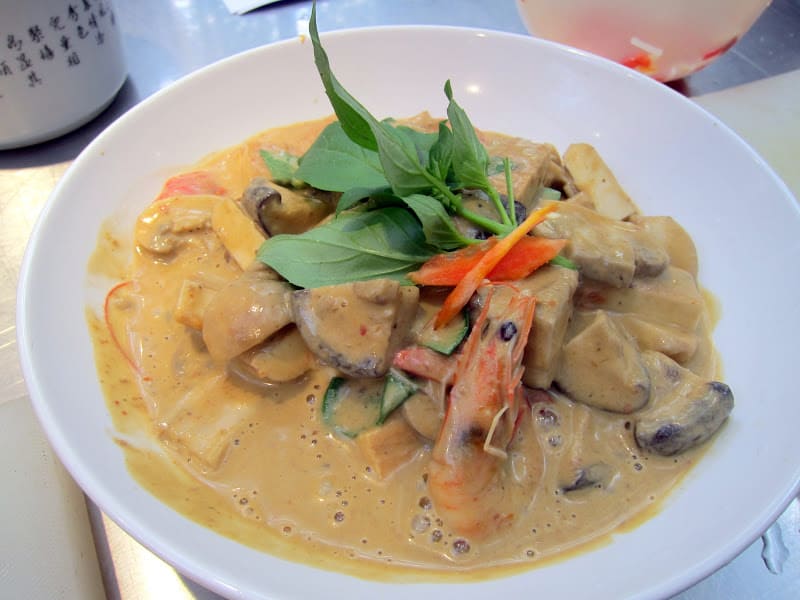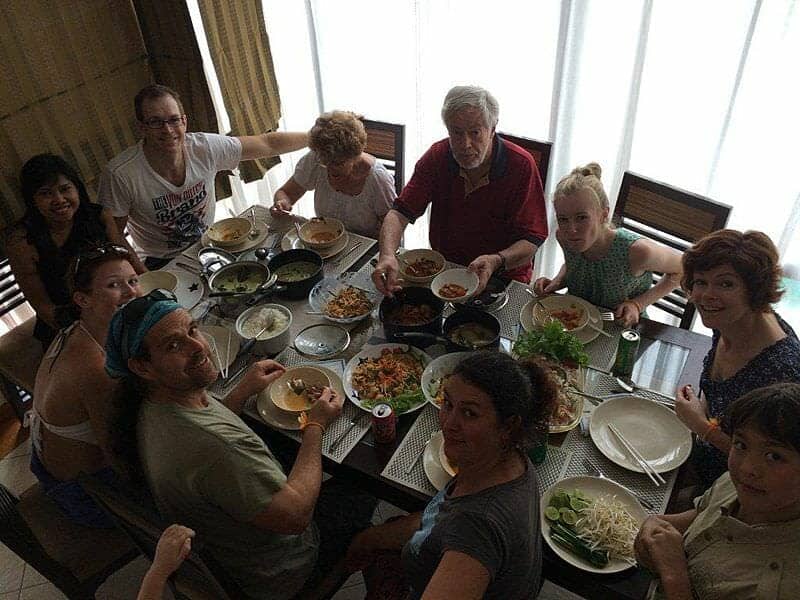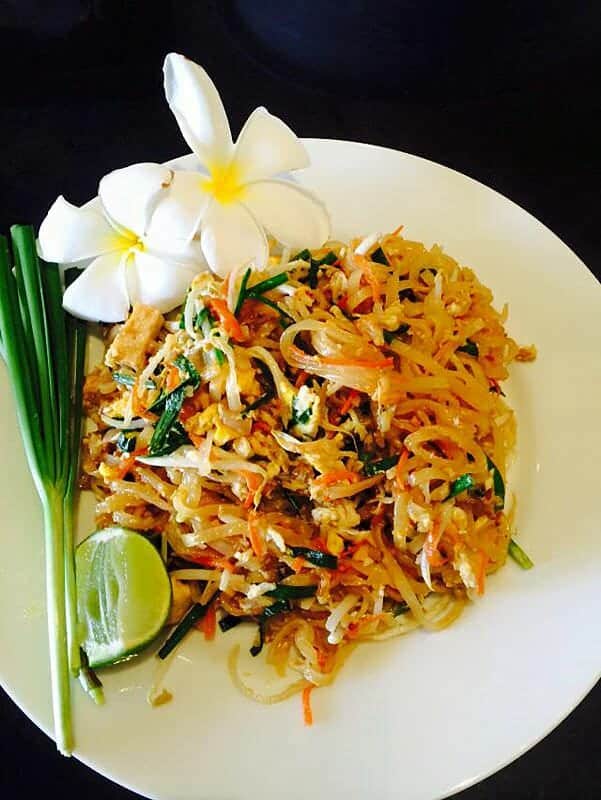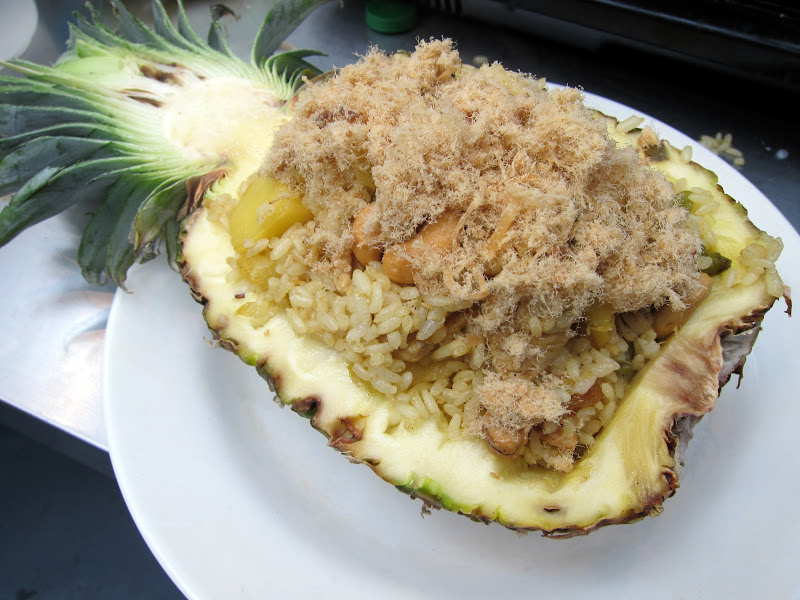I so enjoyed my recent xiaolongbao cooking class that I immediately signed up for another session at the Chinese Cooking Workshop. But instead of learning the secrets of another Chinese delicacy, this time the focus was three Thai dishes. Chef Mike was on hand again, though the recipes were taught by a visiting Thai chef whose name I embarrassingly forgot. Most of the ingredients had been prepped in advance to save precious class time.
We started with spring rolls, a classic appetizer found across Southeast Asia, by dipping a sheet of rice paper into water to make it pliable. Vegetables, nuts, and pre-cooked meat were available for the filling. The chef showed us how to carefully fold the now-sticky rice paper into a beautiful roll. We made a vinegar-based dipping sauce with finely chopped veggies for color and then got to eat our own creations.
The recipe for red curry was more complicated so the chef demonstrated all the steps first. The key to a good Thai curry is getting the curry paste and coconut milk to the right consistency. The two ingredients are cooked down into a Thai version of roux, with constant stirring so the mixture doesn’t burn. Sliced mushrooms and dry tofu were added to the curry along with more coconut milk. The tofu looked terrible going in, like bits of styrofoam packing peanuts, but they softened during cooking and ended up being my favorite component of the dish. The curry was finished off with shrimp, tomatoes, lime leaves, basil, palm sugar and fish sauce.
Our good-humored chef helpfully told us to buy the best quality fish sauce we can find and to always make sure it’s among the last ingredients added when cooking Thai food. This will minimize the amount of pungent vapor released into your kitchen. After tasting the chef’s version, we were split into three groups to see if we could recreate the curry. We made a valiant effort, but her version was the clear winner.
Our third and final dish was pineapple fried rice served in a hollowed out pineapple. Visually stunning, this dish is also surprisingly simple to make. The chef showed us how to prepare the pineapple, then cooked the freshly cut fruit with pork and garlic. Soy sauce, curry powder, sugar, raisins and fish sauce were stirred in right before the pre-cooked rice was added to the wok. Once the rice was fried, it was spooned into the pineapple shell and topped with roasted cashew nuts.
The finishing touch was something called “pork floss” that looked too much like sawdust for my liking. I’ll skip that ingredient when I make the dish at home. While I preferred the more hands-on experience of the xiaolongbao class, I enjoyed the lively demonstrations by the friendly chef and am excited to try cooking these great recipes at home.
Which of these Thai dishes would you most like to make?
You may also like:
This content was originally published here.




